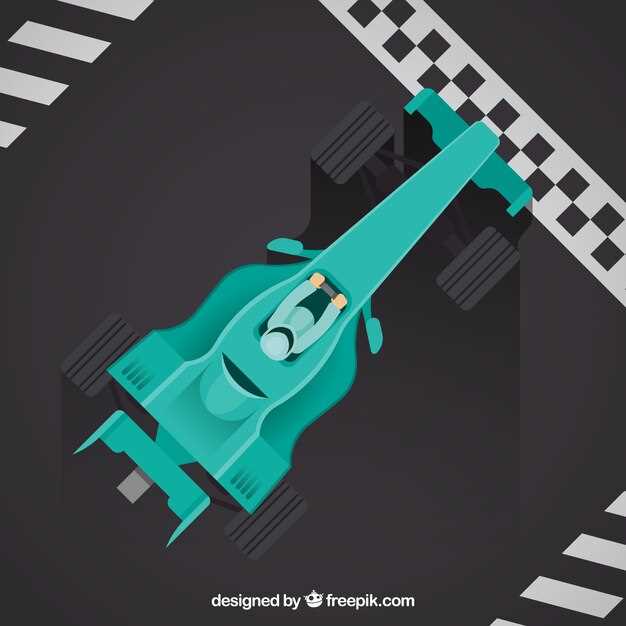
In the realm of competitive racing, two prominent techniques have emerged: Heads-Up racing and Index racing. Each of these approaches offers unique strategies and challenges, catering to different classes of racers and their specific goals. Understanding the nuances between these methods can significantly influence a racer’s performance and outcomes during competitions.
Heads-Up racing focuses on direct competition between two drivers, where the objective is straightforward: the first one to cross the finish line wins. This class of racing emphasizes reaction times, vehicle performance, and driver skill, making it an exhilarating experience for participants and spectators alike. The adrenaline rush of competing against a single opponent creates a dynamic environment where split-second decisions can determine victory or defeat.
On the other hand, Index racing introduces a different set of parameters, wherein drivers compete against a predetermined time, or index. In this class, each racer is awarded points based on their ability to stay as close to their index time as possible. The strategic element of Index racing requires participants to balance speed with consistency, creating a unique challenge that differs significantly from the heads-up format. This approach not only tests driving skills but also the ability to strategize under pressure, often leading to thrilling outcomes.
Exploring these two racing techniques highlights the various dynamics that shape the competitive landscape. The choice between Heads-Up and Index racing ultimately depends on a racer’s strengths, preferences, and the expected level of competition. By examining their differences, racers can better prepare themselves for the challenges ahead and refine their techniques for optimal performance on the track.
Key Strategies for Success in Heads-Up Racing

Heads-up racing, a competitive format that pits two racers against one another, requires specific techniques to excel. The primary strategy involves a strong understanding of the index system, which allows racers to gauge performance against established benchmarks or ‘class’ standards.
Firstly, effective preparation is crucial. Racers should familiarize themselves with their opponent’s racing style and previous performances. This knowledge will inform tactical decisions during the race, allowing for strategic positioning and timing of maneuvers.
Secondly, optimizing one’s vehicle according to the index is essential. This includes fine-tuning engine performance, weight distribution, and aerodynamics. By aligning their vehicle’s capabilities with the requirements of their class, racers can gain a competitive edge.
Another vital strategy is to maintain composure throughout the race. Unlike traditional racing formats, heads-up racing can be unpredictable. Staying calm under pressure enables a racer to make quick, effective decisions that can alter the outcome in their favor.
Additionally, mastering the art of reaction time can significantly influence success. In heads-up formats, a fraction of a second can dictate victory or defeat. Practice starts and focus on developing a consistent launch technique are key elements to improving reaction time.
Finally, post-race analysis should be an ongoing practice. Reviewing race footage and data can help identify areas for improvement. By analyzing performance against the index and class benchmarks, racers can refine their strategies and maximize their potential in future competitions.
Core Principles of Index Class Racing

Index class racing is a specialized form of drag racing that focuses on adherence to a predetermined index time, which serves as a benchmark for performance. This format emphasizes the importance of driver skill and precision over sheer speed, creating a unique competitive environment.
1. Understanding the Index
In index class racing, each competitor is assigned a specific index that reflects the best achievable time for their vehicle category. Racers must aim to match or come as close as possible to their index without exceeding it. Exceeding the index results in disqualification for that run, underscoring the significance of control and strategy.
2. Reaction Time and Consistency
A key component of success in index racing is achieving quick and consistent reaction times. Drivers must develop a strong sense of timing to launch their vehicles promptly at the starting signal. A consistent reaction time contributes significantly to overall performance and the ability to judge the right moment to cross the finish line based on the designated index.
3. Vehicle Preparation
Preparing a vehicle for index class racing involves fine-tuning various aspects to ensure it performs optimally while staying within the index limit. This includes optimizing engine performance, weight distribution, and launch techniques. Track conditions, weather, and tire choice also play a crucial role in vehicle preparation strategies.
4. Strategy and Mental Focus
Successful index racing requires a blend of physical skill and mental acuity. Racers must develop a race strategy that includes understanding their vehicle’s capabilities, analyzing competitors, and maintaining focus during each run. Mental discipline is essential, as it helps drivers to stick to their plan and adapt to changing race dynamics.
5. Fair Competition
Index class racing fosters a level playing field, as vehicles of varying speeds compete on equal terms by adhering to the index system. This fairness encourages new participants while ensuring that seasoned racers remain challenged. The emphasis on driver skill allows for a diverse range of competitors and enhances the overall excitement of each race.
In summary, index class racing is defined by its core principles: a structured index system, the importance of reaction time, meticulous vehicle preparation, strategic planning, and fostering fair competition. These elements create a thrilling racing environment where driver expertise is paramount.
Identifying the Right Technique for Your Racing Goals
When it comes to achieving success in racing, selecting the right technique is crucial. Two prominent methods are heads-up and index racing techniques, each suited for different objectives and skill levels. Understanding the nuances of these techniques can help racers align their strategies with their specific goals.
Heads-up racing typically involves direct competition between two racers, emphasizing quick reflexes and strategic decision-making. This technique is ideal for those aiming to improve their racing skills in a competitive environment. It requires an acute understanding of one’s vehicle capabilities and the ability to adapt to opponents’ tactics in real-time. If your goal is to sharpen your competitive edge and enjoy the thrills of on-the-spot decision-making, heads-up racing may be the right choice for you.
On the other hand, index racing focuses on strictly adhering to predetermined time limits, allowing racers to achieve their best performance without relying solely on direct competition. This technique is well-suited for those who prioritize consistency and precision over immediate wins. If your objective involves hitting a specific performance metric or developing a steady racing rhythm, index racing offers a structured framework to gauge improvement and refine technique.
Assessing your goals is essential in determining which technique aligns best with your aspirations. Factors such as your racing experience, desired outcomes, and the level of competition you wish to engage in can dictate the most appropriate approach. By carefully analyzing these elements, you can enhance your racing experience and work towards achieving your unique objectives with either heads-up or index racing techniques.



